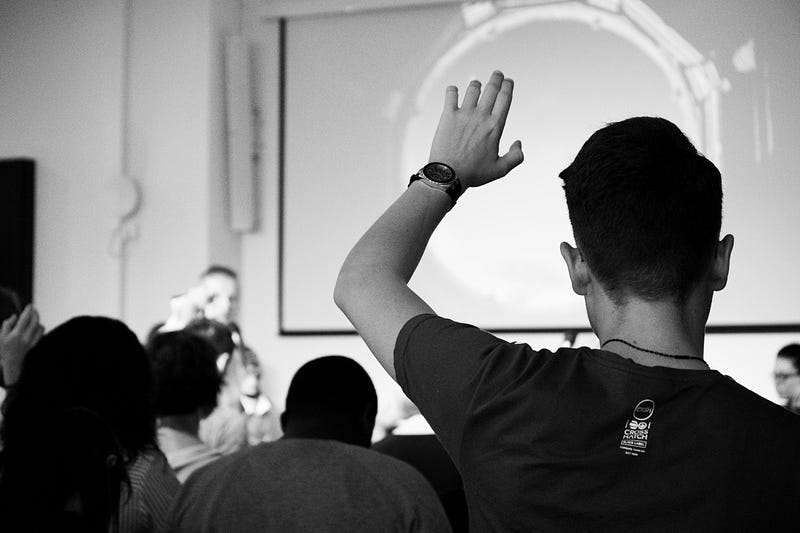A Discussion of “How Often Does Active Learning Actually Occur?”
“Chalk and Talk.”
“Sage on the Stage.”
AKA, lecturing — the most common technique used in teaching economics in higher education today.
Why? Because it is effective? Probably more because it is traditional. It is the method most current professors had in school. So in that sense it is effective, at least for those who liked school enough to become a professor!
However, the experience of listening to a lecture is classified as Passive Learning in contrast to classroom activities that engage the students, which are considered Active Learning.
Essentially Active Learning is when the student is thinking or doing and Passive Learning is when the student is listening.
Active Learning has been promoted in the pedagogical literature for several decades. According to Sheridan and Smith (2020),
…recent studies suggest that lecturing is still the dominant pedagogical choice in economics, even though most instructors believe that active learning methods are superior.” (p. 304)
So then why are we not doing more of this thing we seem to think is superior?
Perhaps because it is as the authors suggest — maybe we think we are using more active learning techniques than we actually are.
The Study
The authors gather recordings of 535 class sessions from various business school disciplines, with the majority being from economics classes. They then use a tool, DART, developed by Owens, et al. (2017) to analyze how the class time is being spent: active or passive learning.
Machine analysis makes it possible for the large-scale analysis of class sessions. Previous efforts that relied on humans to do the analysis necessarily restricted the number of class sessions that could be studied at one time.
DART algorithmically sorts out how much time is active learning with 90% accuracy, reportedly, by classifying audio recordings into 3 categories.
- Single Voice
- Multiple Voice
- No Voice
Single Voice is considered Passive Learning. This includes a professor lecturing, of course, but also a professor led discussion. So a professor posing a question and calling on students one at a time is considered Passive Learning.
Multiple Voice could be indicative of various types of Active Learning in groups while No Voice is also considered to be Active Learning as students sit quietly thinking, like in Think, Pair, Share, or working alone on a problem.
In addition to the DART data, the authors survey the professors for their perception of how much time is spent in active and passive learning. Then they will compare reality (DART) to perception (professor survey data).
Results
DART data reveals that the time for all 535 sections breaks out as (p. 305)
- 89% is Single Voice,
- 9% is Multiple Voices, and
- 2% is No Voice.
According to the survey data of these professors, they reported passive learning activity would be 78.5% versus the 89% DART observed.
And they reported active learning activity would be 21.5% versus the 11% DART observed.
Thus, the authors conclude professors think they are doing 10.5% more active learning than they really are.
The reported data thus boils down to roughly 90% Passive and 10% Active Learning in reality compared to roughly 80% Passive and 20% Active Learning in perception.
Why the gap? The authors suggest 2 reasons.
- Active learning may be more challenging to the professor to implement and the effect of a challenging task is to make time seem slower.
- Or, the desire to be seen as doing “good” teaching causes them to overestimate the time spent on active learning.

Is This the Right Way to Measure Active Learning?
I have some issues with all of this.
First, is instructor led discussion truly passive? I get that it is one person speaking, but certainly all who participate in the discussion are at least being active.
And to the extent one student’s statement generates responses, it seems like Active Learning is involved. And the more skillful the professor is at letting the conversation flow, the more active it should be considered.
Second, one activity I like to do is in-class polling, which is Active Learning to me. Some departments have clicker technology for this and can track each student’s responses which incentivizes effort.
I don’t have that but simulate the experience with Poll Everywhere. Here’s how it works in my classes and how DART would classify it.
- I put the question on the screen and read it out. Single Voice, which would be called Passive Learning.
- I then give the students time to think and submit their answers. Likely No Voice (unless they are getting rowdy and then it would be Multiple Voice). Either way, that time would be called Active Learning.
- However, instead of leaving them in silence, I am often speaking, maybe answering a questions. Or maybe joking around with some of them who are done to keep the engagement up while we wait for all the responses to come in. That would be Single Voice, Passive Learning.
- Finally once the answers are in, I will state the correct answer, open it up to questions or discussion, and maybe do a mini-lecture as needed. All of that is Single Voice, passive learning.
If surveyed later about my class, I would classify all the polling time as Active Learning, but DART would likely not agree. However, comments and evaluations from students indicate they do perceive it as an activity that helps them learn precisely because they are actively engaged.
Third, I like having an in-class group exercise after covering a few chapters for students to gauge their progress as well as learn from each other. Certainly the time they work on it would be Active Learning with Multiple Voices. But I think the time we spend reviewing it after it is turned in is Active Learning. DART would see it as Single Voice, and call it Passive Learning.
I guess at the root of my criticisms is I think some activities that are Single Voice coincide with students actively thinking or doing. Sorry, DART!
Those criticisms aside, whether reality is 90% Passive, 10% Active or 80% Passive, 20% Active — neither is terribly impressive. It seems to me we would want to aim for the reverse of those.
Yes, we still need at least mini-lectures to sum up the main points of an activity or to address known pitfalls so aiming for 0% passive learning should not be the goal. However, in my experience such mini-lectures will be better absorbed if they come after the student has actively worked with the materials.
References:
Owens, Melinda T,. Shannon R. Seidel, Mike Wong, Travis E. Bejines, Susanne Lietz, Joseph R. Perez, Shangheng Sit, et al,, 2017. “Classroom Sound Can Be Used to Classify Teaching Practices in College Science Courses.” Proceedings of the National Academy of Sciences of the United States of America 114 (12): 3085–90.
Sheridan, Brandon J. and Ben Smith, 2020. “How Often Does Active Learning Actually Occur? Perception versus Reality.” AEA Papers and Proceedings, 110: 304–308.




